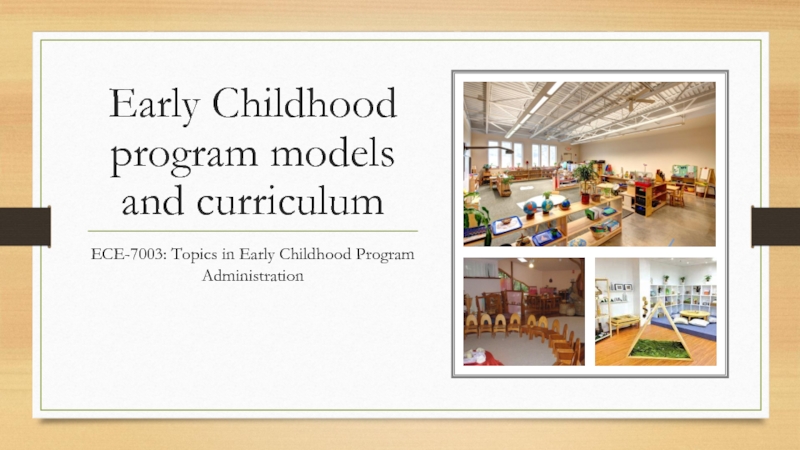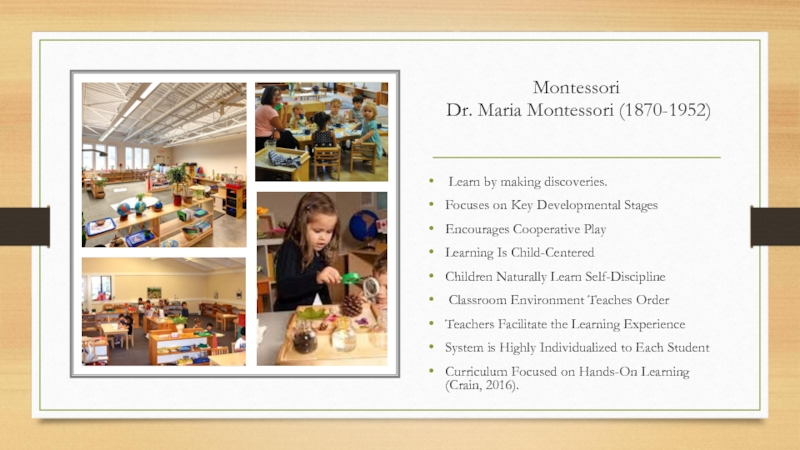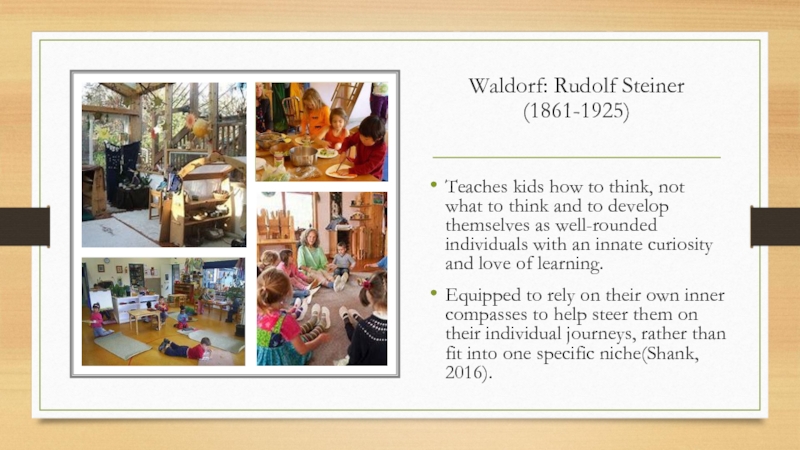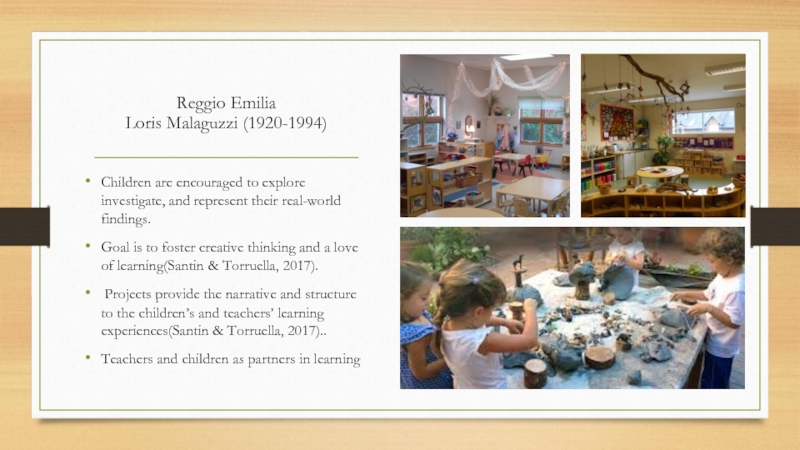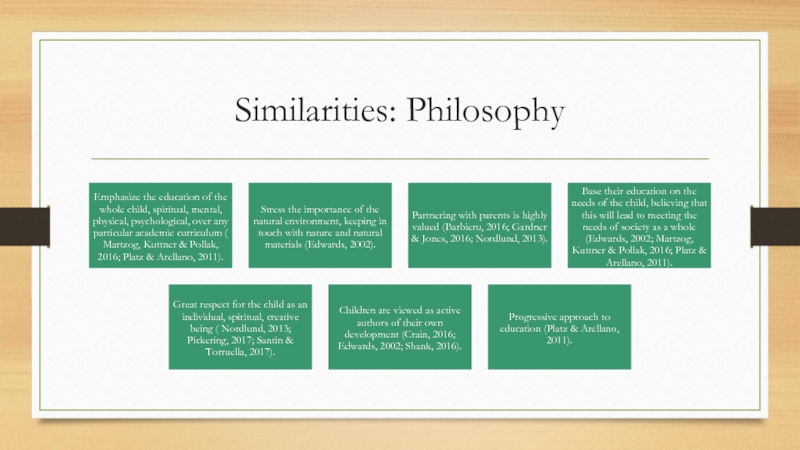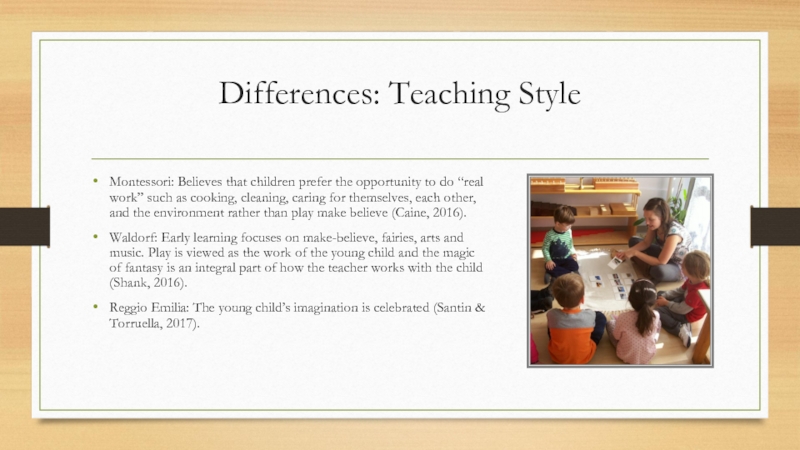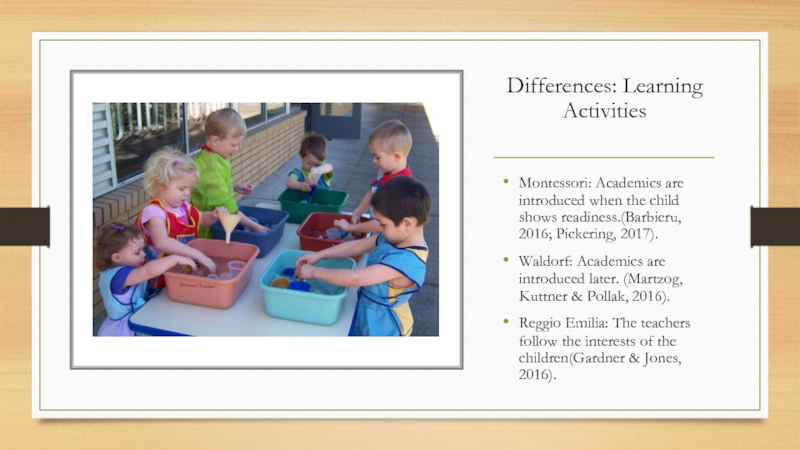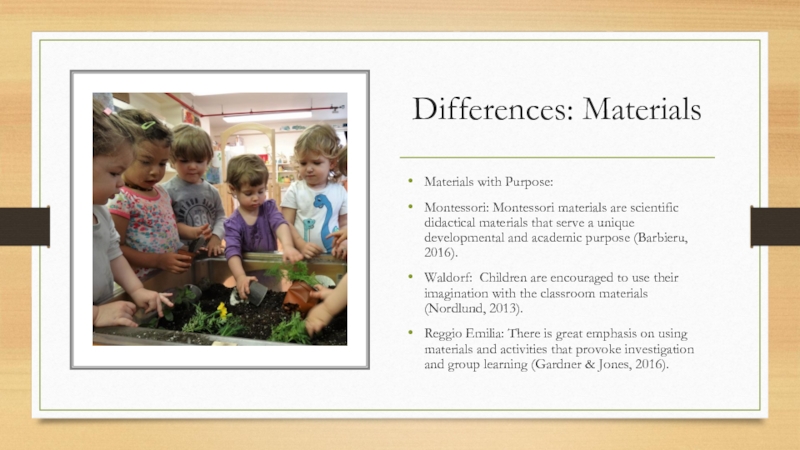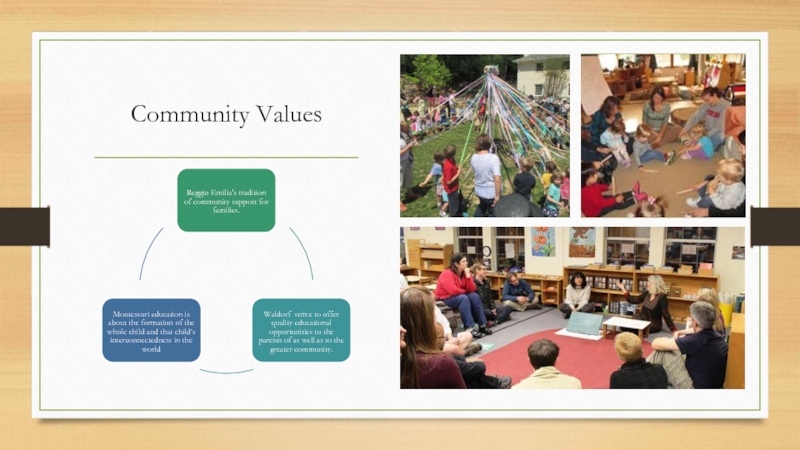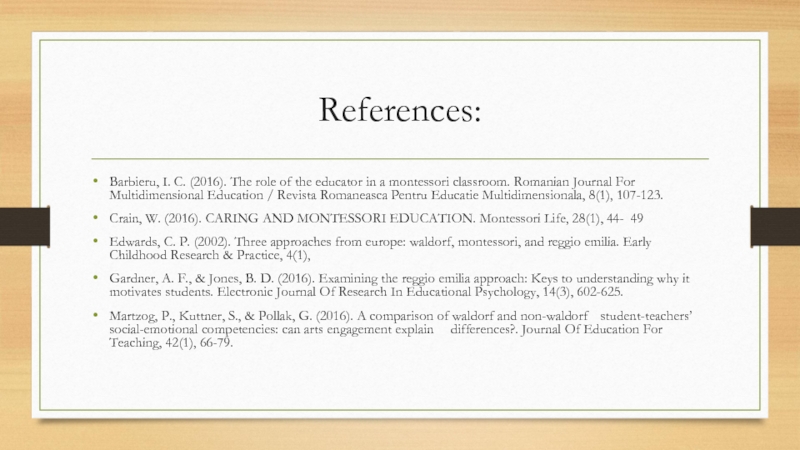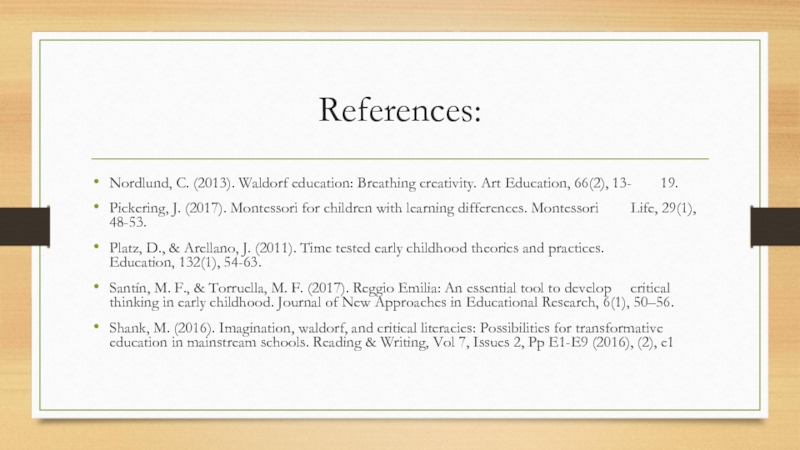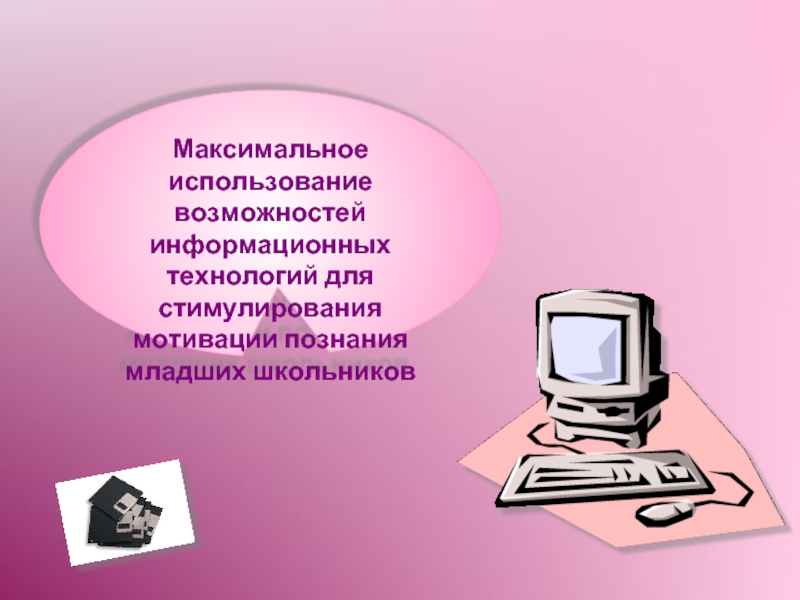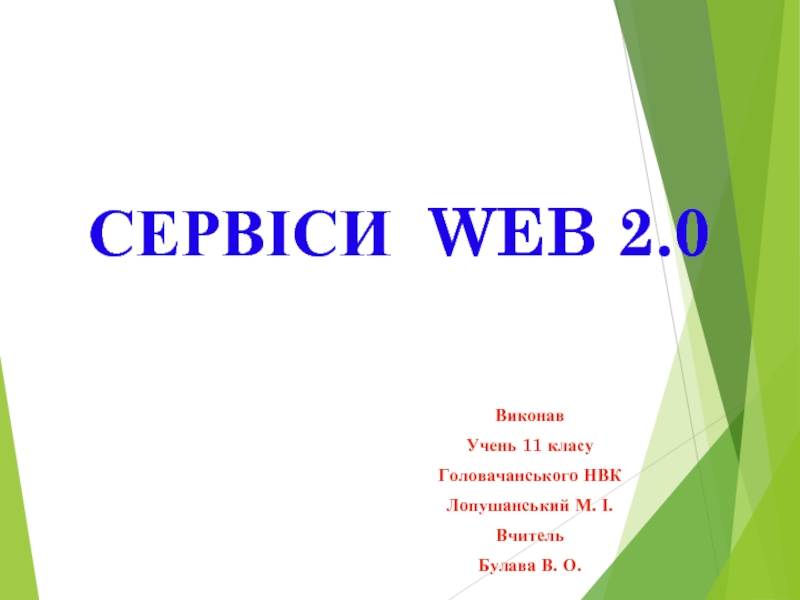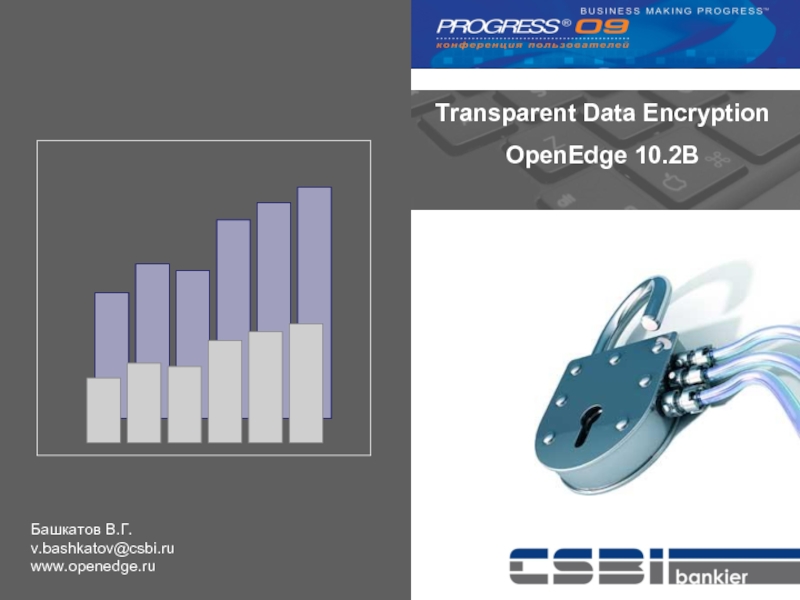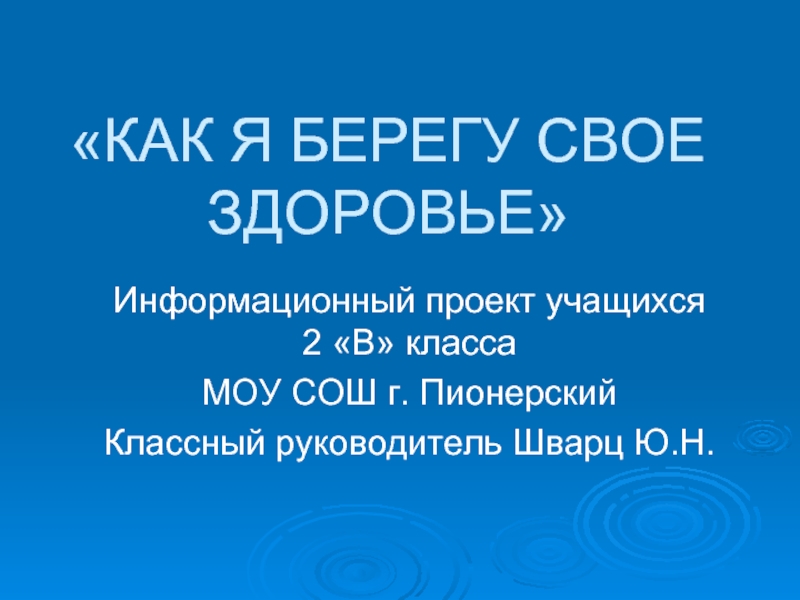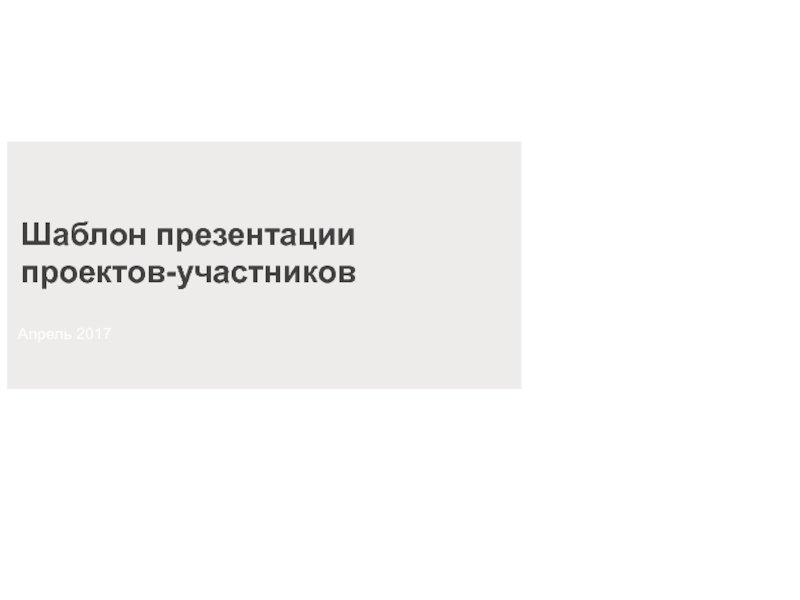- Главная
- Разное
- Дизайн
- Бизнес и предпринимательство
- Аналитика
- Образование
- Развлечения
- Красота и здоровье
- Финансы
- Государство
- Путешествия
- Спорт
- Недвижимость
- Армия
- Графика
- Культурология
- Еда и кулинария
- Лингвистика
- Английский язык
- Астрономия
- Алгебра
- Биология
- География
- Детские презентации
- Информатика
- История
- Литература
- Маркетинг
- Математика
- Медицина
- Менеджмент
- Музыка
- МХК
- Немецкий язык
- ОБЖ
- Обществознание
- Окружающий мир
- Педагогика
- Русский язык
- Технология
- Физика
- Философия
- Химия
- Шаблоны, картинки для презентаций
- Экология
- Экономика
- Юриспруденция
early childhood program models and curriculum презентация
Содержание
- 1. early childhood program models and curriculum
- 2. Overview
- 3. Montessori Dr. Maria Montessori (1870-1952)
- 4. Waldorf: Rudolf Steiner (1861-1925)
- 5. Reggio Emilia Loris Malaguzzi (1920-1994)
- 6. Similarities: Philosophy
- 7. Differences: Teaching Style Montessori: Believes that children
- 8. Differences: Learning Activities Montessori: Academics
- 9. Differences: Materials Materials with Purpose:
- 10. Community Values
- 11. References: Barbieru, I. C. (2016). The role
- 12. References: Nordlund, C. (2013). Waldorf education: Breathing
Слайд 1
Early Childhood program models and curriculum
ECE-7003: Topics in Early Childhood Program
Administration
Слайд 3
Montessori
Dr. Maria Montessori (1870-1952)
Learn by making discoveries.
Focuses on
Key Developmental Stages
Encourages Cooperative Play
Learning Is Child-Centered
Children Naturally Learn Self-Discipline
Classroom Environment Teaches Order
Teachers Facilitate the Learning Experience
System is Highly Individualized to Each Student
Curriculum Focused on Hands-On Learning (Crain, 2016).
Encourages Cooperative Play
Learning Is Child-Centered
Children Naturally Learn Self-Discipline
Classroom Environment Teaches Order
Teachers Facilitate the Learning Experience
System is Highly Individualized to Each Student
Curriculum Focused on Hands-On Learning (Crain, 2016).
Слайд 4
Waldorf: Rudolf Steiner (1861-1925)
Teaches kids how to think, not
what to think and to develop themselves as well-rounded individuals with an innate curiosity and love of learning.
Equipped to rely on their own inner compasses to help steer them on their individual journeys, rather than fit into one specific niche(Shank, 2016).
Equipped to rely on their own inner compasses to help steer them on their individual journeys, rather than fit into one specific niche(Shank, 2016).
Слайд 5
Reggio Emilia
Loris Malaguzzi (1920-1994)
Children are encouraged to explore investigate, and represent
their real-world findings.
Goal is to foster creative thinking and a love of learning(Santin & Torruella, 2017).
Projects provide the narrative and structure to the children’s and teachers’ learning experiences(Santin & Torruella, 2017)..
Teachers and children as partners in learning
Goal is to foster creative thinking and a love of learning(Santin & Torruella, 2017).
Projects provide the narrative and structure to the children’s and teachers’ learning experiences(Santin & Torruella, 2017)..
Teachers and children as partners in learning
Слайд 7Differences: Teaching Style
Montessori: Believes that children prefer the opportunity to do “real
work” such as cooking, cleaning, caring for themselves, each other, and the environment rather than play make believe (Caine, 2016).
Waldorf: Early learning focuses on make-believe, fairies, arts and music. Play is viewed as the work of the young child and the magic of fantasy is an integral part of how the teacher works with the child (Shank, 2016).
Reggio Emilia: The young child’s imagination is celebrated (Santin & Torruella, 2017).
Waldorf: Early learning focuses on make-believe, fairies, arts and music. Play is viewed as the work of the young child and the magic of fantasy is an integral part of how the teacher works with the child (Shank, 2016).
Reggio Emilia: The young child’s imagination is celebrated (Santin & Torruella, 2017).
Слайд 8
Differences: Learning Activities
Montessori: Academics are introduced when the child shows readiness.(Barbieru, 2016;
Pickering, 2017).
Waldorf: Academics are introduced later. (Martzog, Kuttner & Pollak, 2016).
Reggio Emilia: The teachers follow the interests of the children(Gardner & Jones, 2016).
Waldorf: Academics are introduced later. (Martzog, Kuttner & Pollak, 2016).
Reggio Emilia: The teachers follow the interests of the children(Gardner & Jones, 2016).
Слайд 9
Differences: Materials
Materials with Purpose:
Montessori: Montessori materials are scientific didactical materials that serve a
unique developmental and academic purpose (Barbieru, 2016).
Waldorf: Children are encouraged to use their imagination with the classroom materials (Nordlund, 2013).
Reggio Emilia: There is great emphasis on using materials and activities that provoke investigation and group learning (Gardner & Jones, 2016).
Waldorf: Children are encouraged to use their imagination with the classroom materials (Nordlund, 2013).
Reggio Emilia: There is great emphasis on using materials and activities that provoke investigation and group learning (Gardner & Jones, 2016).
Слайд 11References:
Barbieru, I. C. (2016). The role of the educator in a
montessori classroom. Romanian Journal For Multidimensional Education / Revista Romaneasca Pentru Educatie Multidimensionala, 8(1), 107-123.
Crain, W. (2016). CARING AND MONTESSORI EDUCATION. Montessori Life, 28(1), 44- 49
Edwards, C. P. (2002). Three approaches from europe: waldorf, montessori, and reggio emilia. Early Childhood Research & Practice, 4(1),
Gardner, A. F., & Jones, B. D. (2016). Examining the reggio emilia approach: Keys to understanding why it motivates students. Electronic Journal Of Research In Educational Psychology, 14(3), 602-625.
Martzog, P., Kuttner, S., & Pollak, G. (2016). A comparison of waldorf and non-waldorf student-teachers’ social-emotional competencies: can arts engagement explain differences?. Journal Of Education For Teaching, 42(1), 66-79.
Crain, W. (2016). CARING AND MONTESSORI EDUCATION. Montessori Life, 28(1), 44- 49
Edwards, C. P. (2002). Three approaches from europe: waldorf, montessori, and reggio emilia. Early Childhood Research & Practice, 4(1),
Gardner, A. F., & Jones, B. D. (2016). Examining the reggio emilia approach: Keys to understanding why it motivates students. Electronic Journal Of Research In Educational Psychology, 14(3), 602-625.
Martzog, P., Kuttner, S., & Pollak, G. (2016). A comparison of waldorf and non-waldorf student-teachers’ social-emotional competencies: can arts engagement explain differences?. Journal Of Education For Teaching, 42(1), 66-79.
Слайд 12References:
Nordlund, C. (2013). Waldorf education: Breathing creativity. Art Education, 66(2), 13- 19.
Pickering, J. (2017).
Montessori for children with learning differences. Montessori Life, 29(1), 48-53.
Platz, D., & Arellano, J. (2011). Time tested early childhood theories and practices. Education, 132(1), 54-63.
Santín, M. F., & Torruella, M. F. (2017). Reggio Emilia: An essential tool to develop critical thinking in early childhood. Journal of New Approaches in Educational Research, 6(1), 50–56.
Shank, M. (2016). Imagination, waldorf, and critical literacies: Possibilities for transformative education in mainstream schools. Reading & Writing, Vol 7, Issues 2, Pp E1-E9 (2016), (2), e1
Platz, D., & Arellano, J. (2011). Time tested early childhood theories and practices. Education, 132(1), 54-63.
Santín, M. F., & Torruella, M. F. (2017). Reggio Emilia: An essential tool to develop critical thinking in early childhood. Journal of New Approaches in Educational Research, 6(1), 50–56.
Shank, M. (2016). Imagination, waldorf, and critical literacies: Possibilities for transformative education in mainstream schools. Reading & Writing, Vol 7, Issues 2, Pp E1-E9 (2016), (2), e1
